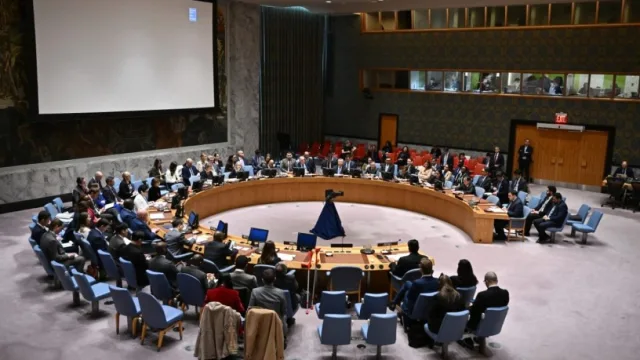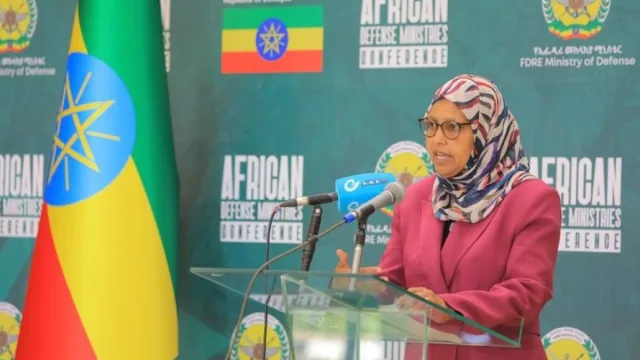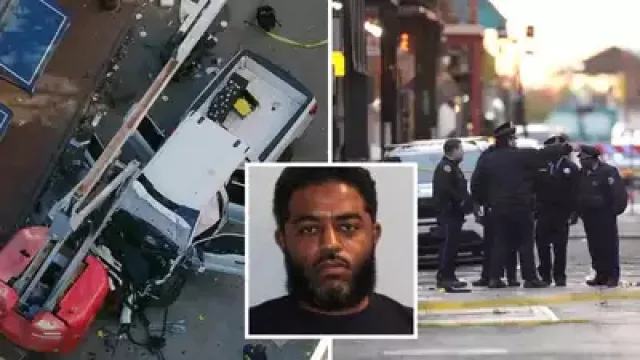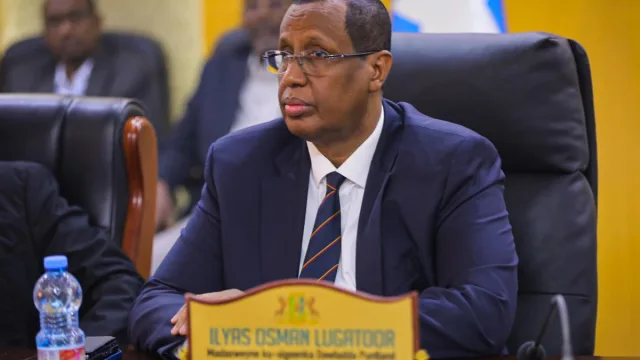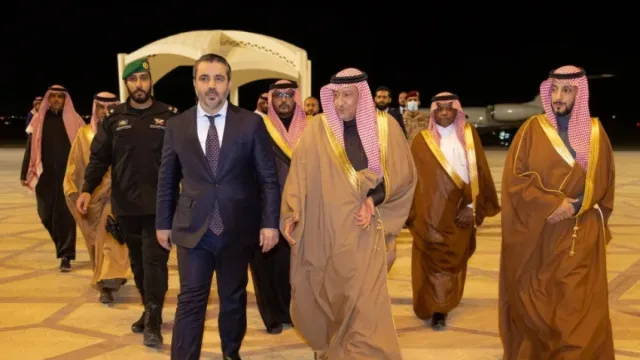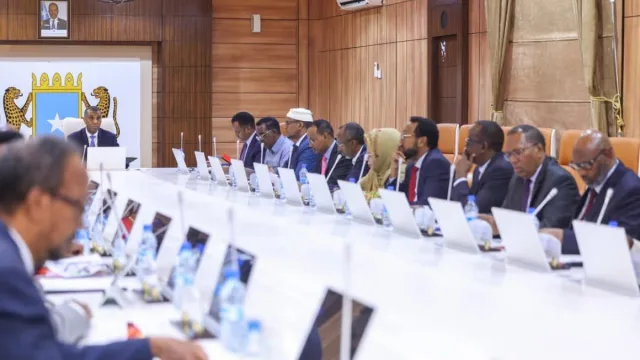As a child in Somalia, Abdinajib Dirir was used to the carnage of war: falling buildings,…
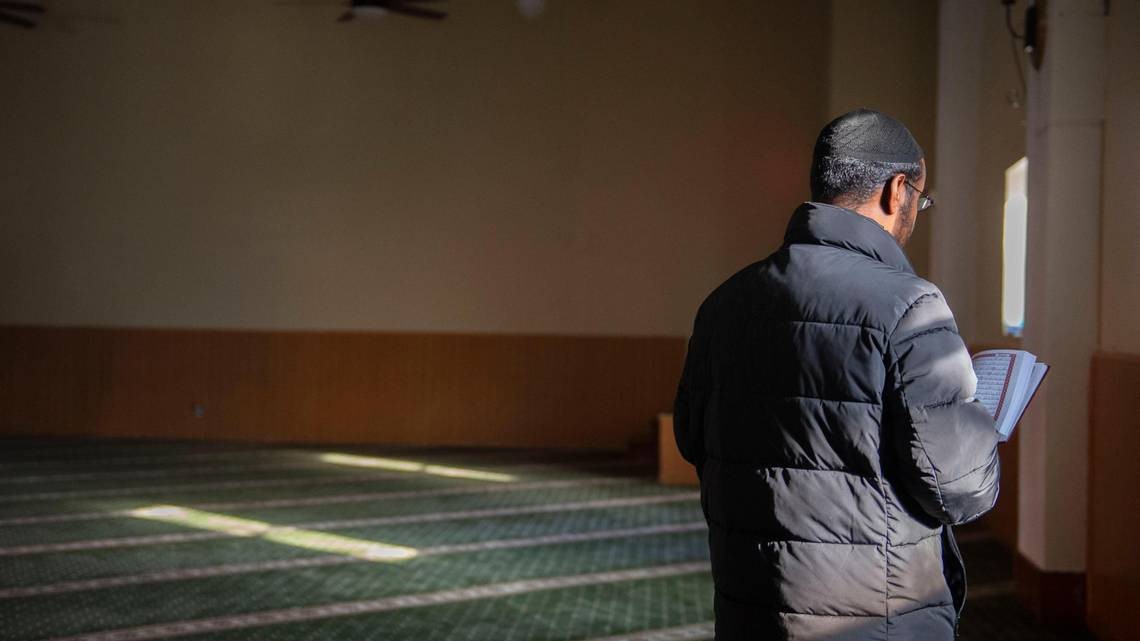
As a child in Somalia, Abdinajib Dirir was used to the carnage of war: falling buildings, fighting armies and gunshots became so routine he forced himself to stop being scared. After escaping with his mother and sister to Kenya in 1992 where they lived in a tent in a refugee camp, he landed in Kansas City at age 14.
He expected safety — finally — and dreamed of the peaceful life he would lead in America.
But he found more violence.
The 42-year-old truck driver and father of 11 has become a mentor to other resettling families. Over the years, he has witnessed children of refugees become victims of gun violence. And in July 2020, his own son was shot.
“Sometimes you question whether it was worth all that,” Dirir said. “You overcome all that to escape — for this? Sometimes you feel there is no place safe at all, so it would have been better to die in your homeland.”
The Somali community began growing in the mid-1990s in Kansas City as the east African nation collapsed into civil war.
Missouri now has the seventh highest population of resettled Somali refugees in the country and Somali is the third-most spoken language in the city after English and Spanish, according to data from the Centers for Disease Control and Prevention and the nonprofit RefugeKC.
Somali residents are concentrated in the northeast between Independence Avenue and Gladstone Boulevard, an area with a high homicide rate. Many say they have become used to the sound of bullets and most everyone seems to have a loved one who has been injured or killed by a gun.
Victims grappling with the fallout of gun violence must navigate additional hurdles: There are stark cultural differences in the medical and court systems, as well as a fear of discrimination from other residents as well as law enforcement.
Additionally, gun violence prevention groups or relief organizations meant for victims do not always translate their services or information. Violence often impacts the most marginalized communities, according to Josh Horowitz, executive director of the nonprofit Educational Fund to Stop Gun Violence, leaving them with fewer resources than others to navigate the trauma.
“We have gun violence all across the board here — so right now, wherever you live, you’re affected by gun violence. That’s just an unfortunately unique facet of life in this country,” Horowitz said. “What would make the immigrant experience unique is that when you live in communities where you see lack of opportunities for education and housing and things like that, you tend to see a high level of gun violence … where you see high degrees of poverty and vulnerability, you see gun violence.”
Shootings killed at least 75 people between 2011 and 2019 in the neighborhoods where Kansas City’s Somali community is concentrated and wounded even more.
Missouri ranks fourth in the nation for the highest gun death rank, according to a study this year from the Giffords Law Center. And a 2019 analysis from the Institute for Health Metrics and Evaluation found that the firearm homicide rate was higher in Missouri than in Somalia.
“The reason we left over there — it is the violence, it is the guns, it is the war — that’s what people run away from, not expecting that you left for that reason and now you find your kids and yourself in danger,” Dirir said.
On July 4, 2020, Dirir had just finished his afternoon prayer and laid down to sleep before a night shift when his daughter frantically awoke him, saying someone had been hurt.
He rushed to the gas station at the corner of Independence Avenue and Van Brunt Boulevard where he found his 15-year-old son writhing on the ground, his leg covered in blood. A stray bullet had pierced through the back window of the family car and struck the teen while he was on the way to the grocery store with his mom and older brother. The Star is not naming the teen out of concern for his safety.
At the hospital, Dirir said detectives were suspicious, pressing him on whether the perpetrator was in the car they took to the store and asking whether he or his wife kept a gun in the vehicle. “This is a question that comes back all the time … when you become a victim here, if any discrimination existed,” he said.
“We go through that on so many different levels: if they know we are Muslim, people may discriminate against us. If they come closer to us and they speak to us and they see we have an accent, there’s another reason they could discriminate against us. At the same time, when it comes to color, they can tell our color is black.” Dirir said he was one of the lucky ones — his son’s injuries weren’t fatal.
But the road to recovery has been difficult. It took three months of rehabilitation for his son to walk again and he also tested positive for COVID in the hospital. That was followed by two subsequent surgeries and weeks-long stints in the hospital.
Dirir took a leave of absence from work to care for his son, and the family fell behind on bills. But because no one was charged in the shooting, they were ineligible for relief money through the victim compensation process.
The police detective is responsible for keeping families updated about what is happening in their case, according to Capt. Leslie Foreman, a spokeswoman for the Kansas City Police Department.
But Dirir said he was never informed when officers arrested three men for his son’s shooting. The prosecuting attorney’s office declined to charge them. TRAUMA OF GUN VIOLENCE Dirir was not a stranger to this process: Many in the community turn to him for guidance.
As one of the first Somali refugees to resettle here and a board member at Masjid Al-Huda, the largest and oldest Somali-majority community center in the city, Dirir has built up a wealth of knowledge about the city and the congregation.
The level of gun violence was much lower when he first arrived in Kansas City: Between 1999 and 2019, gun deaths increased by 62% in Jackson County, according to the Star’s analysis of national health data. In 2014, when his 15-year-old nephew, Abdisamad Sheikh-Hussein was killed outside the Somali Cultural Center on Admiral Boulevard in what prosecutors described as an anti-Muslim attack, Dirir helped his brother navigate the victim compensation process.
“Being within the community, and helping other victims, especially parents who lost their sons, I know how little information they get. I see my son’s life — he’s alive now, even though he is going through a lot,” Dirir said. “I feel they are the ones who deserve to press their case more than mine. Their son is gone, and I have mine right here next to me.”
But his son’s life no longer looks like it did before: He loved playing sports, but is no longer able to do so. He is afraid to sit in the car he was shot in, but the family could not afford a new one. His son was always a good kid who stayed out of trouble, Dirir said, and it hurts to see him go through so much hardship.
“What did [he] do that he deserved to go through all this?” he asked. The trauma of violence is now impacting the lives of first generation Somali Americans more than their immigrant parents, community members say.
Near Masjid Al-Huda, located on Van Brunt Boulevard in the South Indian Mound neighborhood, there were nearly 60 shootings in 2020, according to a Star analysis of law enforcement data.
Last May, 16-year-old Abdulwahid and 14-year-old Abdirahman Abdulaziz were shot by their older brother after returning home from Ramadan services at the Somali Center of Kansas City on Admiral Blvd. Hanad Abdiaziz, 25, was killed by the police following a confrontation after shooting his brothers.
The teenagers’ deaths were felt deeply by many of the city’s Somali residents — both were active members of their community, even leading prayers during Ramadan. CULTURAL BARRIERS “Inna lilla he wa inna ilayhe rajiun,” a group murmured as they gathered in 2019 to bury Haroun Sy, 22.
That translates “To Him we belong and to Him we return,” a Muslim response to receiving news of a death, which highlights the spiritual significance of the moment.
Sy was shot and killed Feb. 6, 2019, in northeast Kansas City near an apartment complex at 14th Street and Highland Ave. Though police identified a person of interest in the shooting, no one has been charged and the case remains open, said Sgt. Jacob Becchina, a spokesman for KCPD.
When someone dies in a homicide, the Jackson County medical examiner conducts an autopsy before releasing the body. The process can take days. But for Somali and Muslim communities, funerals are supposed to take place as soon as possible, usually within 24 hours after a death. The waiting period causes improper burial procedures.
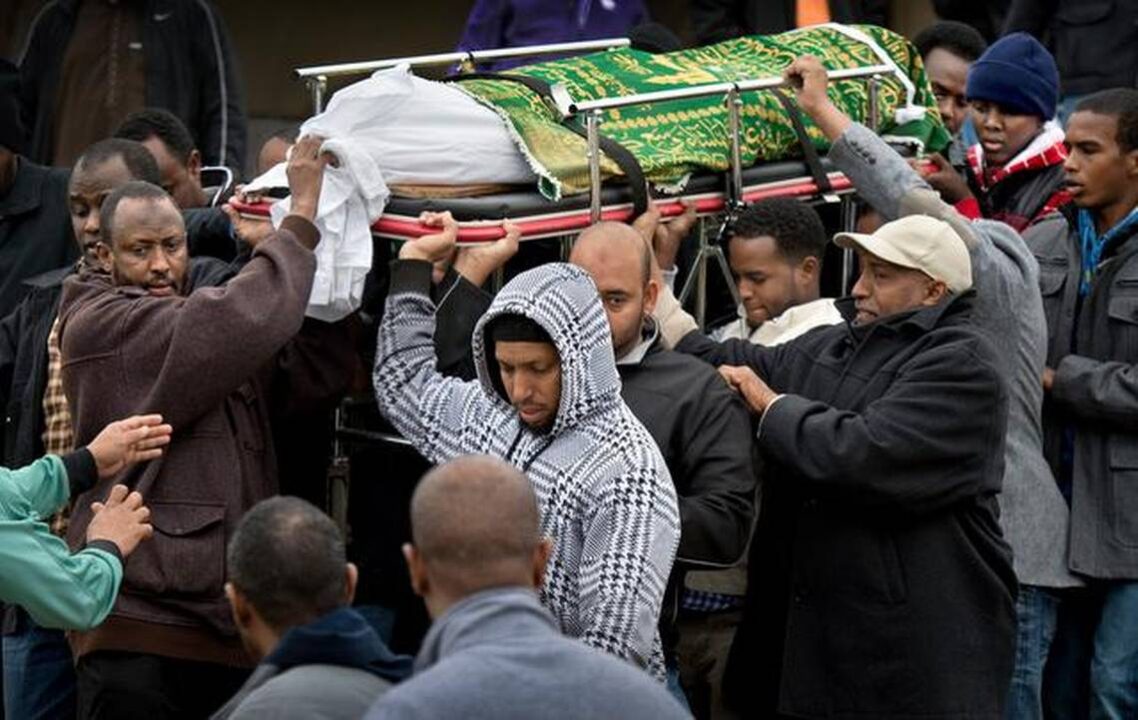
“My brother passed away and three days later we were finally able to go see the body,” Ibrahim Sy said. The long road to get to the funeral causes distress to families. In many cases, the medical examiner’s office is not able to communicate effectively with Somali immigrants about the delay in releasing a body.
At times, friends or community members must step in to act as translators. But American legal terms do not always translate to Somali which can lead to a breakdown in communication especially when translators do not have a strong understanding of either the U.S. or Somali justice systems. “There’s no first-degree murder in Somali language.
In Somali language it’s just called ‘murder.’ There’s not something called manslaughter in Somali language,” said Deqa Rabile, president of the Somali Association of Greater Kansas City.
From there, it can feel like hurdle after hurdle as language and culture differences come into play during a criminal case. Rabile said police often don’t meet families of victims halfway. “Why? Because you fail to understand the needs of the family and the pain they’re going through,” she said. “The biggest problem is lack of understanding of the cultural background of the people.”
Rabile has seen the inability to communicate cause frustration on the officer’s side and confusion for the victim’s family. “The problem is when you don’t understand the perspective of the person you’re trying to help,” she said.
“People are coming from refugee camps — many of them haven’t seen a court system. In refugee camps, there’s no court system, there is survival of the fittest.” Rabile is designated to wash bodies for burial at the city’s Muslim cemetery, and has seen violence in the form of both suicide and homicide impact other populations as well: in November 2021, two young men from Burmese and Iraqi communities died from bullet wounds.
Barriers in accessing resources for help only exacerbate the effects of violence on those communities. “Many times, when I explained the situation to the detective or the police officer they are willing to do whatever they can to make the process understandable to the person,” she said.
“But how often does that happen? Not much … so at the end of the day, you end up in a situation where everybody’s frustrated.” POLICE AND PROSECUTORS Abdi Sanweyne, 27, had picked up groceries and was walking home to his wife and baby when he was shot and killed on Garfield Avenue in December 2017.
He did not know the man who killed him, according to the Jackson County Prosecutor’s Office. While much of the gun violence in Kansas City stems from interpersonal conflict, many victims in the Somali community have fallen prey to seemingly senseless acts of violence like drive-by shootings and stray bullets.
“I definitely noticed that pattern that unfortunately, a lot of the victims are unfamiliar with this person,” said Kristin Filardo, a victim advocate with the prosecutor’s office. “The cases that I’ve had of refugees and immigrants are either they had just met this person and barely know them or it was just kind of a random type of situation.”
Sanweyne’s family was originally hesitant to work with the victim advocate and prosecutor. But community members with long-standing ties to Kansas City helped establish a bridge.
During the trial, Sanweyne’s family stood in front of a judge, accompanied by an official translator to provide character testimony. Meanwhile, seated on the court benches, two friends quietly provided translation of court proceedings to loved ones watching the trial.
Nearly two years later in October 2019, Charles Carter Jr. was sentenced to 27 years in prison for second-degree murder and armed criminal action for killing Sanweyne. It was a relief to Sanweyne’s parents, wife and friends, who were glad to see justice served. It was a stark contrast to their experience after the government collapsed in Somalia and there were no functioning courts.
But many other families of victims may not get a chance in the judicial system, said Jennifer Tatum, a Jackson County prosecuting attorney. “There are circumstances where members of the immigrant community are less likely to come forward,” Tatum said.
Due to their precarious economic or residency status, members of immigrant and refugee families are forced to take on jobs or live in areas that put them more at risk for gun violence, and may be more reluctant to step forward when they become victims of gun violence.
“Being an immigrant or refugee, I think sometimes due to that status and how our system is set up, that puts you in situations that you don’t want to be in but you have to be in to survive,” Filardo said. “I’ve had a couple of cases that come to mind that the victim didn’t want to be in that situation or didn’t want to have to work that job or live in that area, but due to their status, they felt like that was their only option. And so that just set them up, unfortunately, to be in a bad area or around the wrong people.”
For Tatum, Sanweyne’s case opened her eyes to the work that needed to be done within the prosecutor’s office. She formed a group of about 15 to 20 prosecutors and other staff members to learn more about the city’s growing East African community.
The group read books to gain a better understanding of the civil war that had driven refugees to Kansas City and met with community leaders to discuss the needs of Somali families suffering from gun violence.
“We ended up having a discussion with other prosecutors so that some of us could learn … what we can do to help get acquainted with their culture and help,” Tatum said. “We do have a large Somali population here and this is not the first time and unfortunately won’t be the last time we have a victim from that community.” Law enforcement has also worked to build relationships with the Somali community.
After the mass shooting at a New Zealand mosque in 2019, KCPD officers visited Masjid Al-Huda to express their sympathy and help alleviate security concerns.
When the department makes efforts to connect with residents it is appreciated and people feel safer, community members say.
‘YOU CANNOT CALL THAT HOME’ Independence Avenue is dotted with Somali businesses: restaurants, hair salons and a halal meat shop. The buildings are covered in signs in Somali and Arabic. Nearby is a mall selling traditional clothes, scarves and dresses, as well as a number of Somali-majority mosques.
Khadra Aden grew up in northeast Kansas City but decided to move with her three children to escape the gun violence. Her brother, who still lives there, was left paralyzed after a man shot him at a mini-mart on Norton and Independence Avenue in 2015.
Much of the state’s Somali population has been centralized in Kansas City over the years because when refugees arrive, resettlement agencies help them find housing where costs are more affordable, often in northeast Kansas City. But rates of gun violence and poverty are higher than in many other parts of the city.
There were nearly 100 shootings in the neighborhoods that stretched along Independence Avenue, south of Gladstone Boulevard in 2020, the last year such data was available. The area is also home to three of the poorest ZIP codes in the city. “The northeast area is beautiful,” Aden said. “I grew up in that community, but when you’re afraid and you cannot get out of your own house or apartment, you cannot call that home.”
Though the man who shot Aden’s brother was arrested, the incident continued to devastate her family for years and her brother, who used to speak English and Somali, was only able to regain his Somali language skills.
Aden now works as a caseworker for new refugees at the Della Lamb Center, a resettlement agency, doing what she can to help people who moved to Kansas City like her build a better life, and have faced unexpected obstacles in the levels of violence, poverty and inadequate housing.
“A lot of young kids have guns now, they’re like ‘We have to protect our businesses, we have to protect our family,’ and that’s not the answer,” Aden said. ‘CURATED OUR OWN COMMUNITY’ Abdul-Rahman Hatimi landed in Kansas City in 2000 with his wife and two children after living in a Kenyan refugee camp for about 10 years.
The father of seven who has worked at a post office for more than a decade opened Yasmeen Cafe, which serves traditional Somali food, about three years ago on Independence Avenue in hopes of building something for his community.
Last year, the 16-year-old son of Hatimi’s friend was killed in a drive-by shooting in Kansas City, one of many funerals he has attended for young Somali men who have died by gun violence. But Hatimi never intends to move from the northeast area — nowhere else in the city feels like home to him. After years of instability and transient living, long-term housing in an area marked by gun violence still feels like a relief.
There are others whose lives have been touched by violence in Somali neighborhoods, who cannot bear to think of leaving. Northeast Kansas City is one of the few places with easy access to traditional clothing, food and houses of worship. The area is a safe-haven for immigrants and refugees, said Indian Mound Neighborhood Association President Patricia Hernandez.
“We really curated our own community. People don’t understand that when somebody discusses the northeast — it’s not like the east side, it’s not like the south side, the north or anything like that. The northeast is its own community, its own identity,” Hernandez said.
“We love our refugees, we love our diversity. We love our inclusion, we love our people of color, we love our different religions. It’s just such a different environment … it’s very accepting. It makes me think of a hug.” Hatimi’s hopeful that new efforts, businesses and home ownership on Independence Avenue will create a safer neighborhood and a better life for him and the community.
After seeing many shootings occurring in empty lots where youth were spending their time, Masjid Al-Huda created a basketball court by the mosque a few years ago. The community is also fundraising to build a recreation center, in hopes of providing a safe space free of gun violence for kids to spend their time. The area signifies an escape from the war he survived and the chance to build a life even though at times it is punctuated by violence.
“This is violence in a peaceful society, in a law and order society. The gun violence we had back home is war — civil war. No order, no nothing, so you cannot compare the two,” Hatimi said. “Here, there’s everything in this country which everybody hopes for.” He paused. “Then again, it depends which neighborhood you live in.”
Source: .Kansascity
